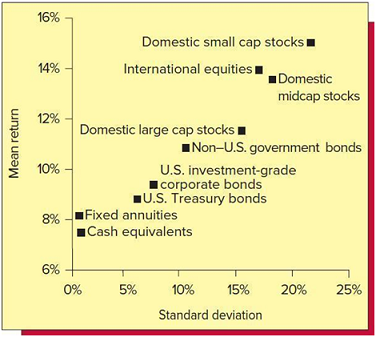Reference no: EM133236905
Assignment - K Nearest Neighbors Algorithm Questions
Part 1 - (300-400 words) - Explain the k-nearest neighbors algorithm for prediction, accompanied by a simple example.
Part 2 - (300-400 words) - Naïve Bayes is a probabilistic machine learning algorithm based on the Bayes Theorem, used in a wide variety of classification tasks.
1. Please explain different types of Naïve Bayes Classifiers.
2. Discuss advantages and disadvantages of Naive Bayes.
3. Explain few applications of Naive Bayes.
Part 3 - (1 page) - What makes a function of a discrete variable a candidate for a discrete random variable distribution? What about the counterpart of this candidacy in the case of a continuous variable? Explain in a one-page, APA formatted response.
Part 4 - For each investment class in Table 3, assume that future returns are normally distributed with the population mean and standard deviation as given. Based on this assumption:
1. For each investment class, find the probability of a return that is less than zero (that is, find the probability of a loss). Is your answer reasonable for all investment classes? Explain.
2. For each investment class, find the probability of a return that is:
a. Greater than 5%.
b. Greater than 10%.
c. Greater than 20%.
d. Greater than 50%.
3. For which investment classes is the probability of the return greater than 50% is essentially zero? For which investment classes is the probability of such a return greater than 1 percent? Greater than 5%?
4. For which investment classes is the probability of loss essentially zero?
5. For which investment classes is the probability of loss greater than 1%? Greater than 10%? Greater than 20%?
Table - Data on Rate of Return of Investment in Securities
